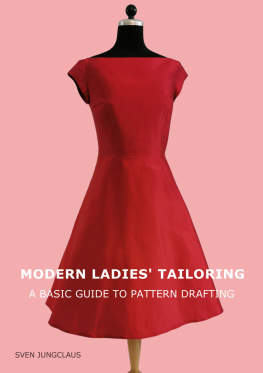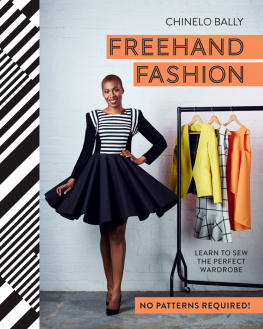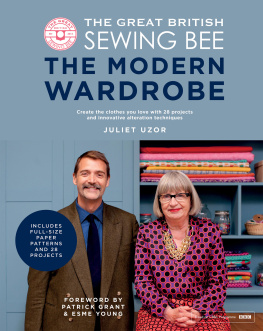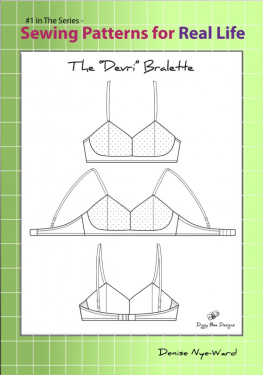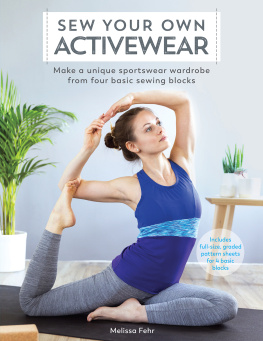Bibliografische Information der Deutschen Nationalbibliothek:
Die Deutsche Nationalbibliothek verzeichnet diese Publikation
in der Deutschen Nationalbibliografie; detaillierte bibliografische
Daten sind im Internet ber www.dnb.de abrufbar.
2020 Sven Jungclaus
1. Correction 2021
Herstellung und Verlag:
BoD Books on Demand GmbH, Norderstedt
ISBN 9783752694635
All rights reserved. It is not permitted to save,
copy or otherwise reproduce this book or any part of it
in any form whatsoever, whether for private or educational use,
without the prior written consent of the copyright holder.
Contents
A few words to start ...
The enthusiasm for home-made is growing, tailoring is experiencing a renaissance. Whether you are professionally tailoring or sewing is your favorite hobby - this book supports you with practical step-by-step instructions in creating a suitable pattern and cutting the cloth.
Some men's tailors like to dismiss ladies' tailoring as being fairly simple and unprofessional. But pattern drafting for women's clothing is far more complicated and complex than for men's clothing. Because more curves make it difficult to achieve a perfect fit. This book will help you create body-hugging clothes for different shapes.
Finally fitting garments!
Once you have acquired the most important basic patterns, you have an optimal basis. With a little practice and imagination, you will soon be able to make the desired modifications to your sewing patterns yourself.
From now on you can create the patterns for pants, skirts, dresses, blouses, blazers, or coats according to your own measurements.
You no longer need to be annoyed that the pieces that have been made with industrial patterns are not fitting properly ...
Limits in the basic pattern
In the case of large differences from standard sizes, there are limits to the proportional calculation of the basic pattern. But with enough seam allowances, a little courage, and a lot of practice, almost any problem can be solved.
Trust your creativity, get valuable instructions in this book, and get started! Enjoy your latest creations!
Recommended tools
The right tools are essential for good work. As pattern paper you can use wrapping paper, newspaper or something similar. In the picture you see other utensils that you might need for taking measurements, creating patterns and cutting:
- Weights to keep the pattern in place
- Measuring tool for the breast dart (see also page )
- Chalk sharpener
- Clothes brush to brush out chalk
- Armhole template
- Tailor's square
- Curve ruler
- Shears for the cloth
- Pinking shears
- Paper scissors
- Pencil
- Tracing wheel
- Pins
- French chalk
- Waist tape measure
- Tape measure
How to take measurements
Neck (NE)
When measuring the neck, care must be taken that the tape measure is not set too high. The circumference is measured at the base of the neck (on the skin), directly above the collarbone. It helps to keep two fingers between tape measure and neck so as not to measure too narrow.
Chest (CHE)
When measuring the chest, the tape measure will be placed around the most prominent point, then passed under the arms and slightly higher at the back.
Underbust (UB)
This measure is taken under the breast, at the level of the bra fastener.
Waistline (WAI)
The waistline is measured exactly around the waist, at the narrowest point just above the hipbone. Here a waist measuring tape is fixed.
Be sure that the measuring tape runs horizontally, both from left to right, and from front to back.
Waistband (WB)
The waistband is measured at the height of the desired position.
Hip (HIP)
The hip circumference, or seat, is measured horizontally around the strongest point of the buttocks.
Height (HEI)
Mostly, the client knows her height. If you do not trust this information, it is measured from the top of the head to the sole of the foot, preferably without shoes.
Otherwise, simply subtract the heel height.
Nape to knee (NTK)
The nape-to-knee is measured from the 7th cervical vertebra along the mid-back across the seat to the knee.
Cervical vertebra point (CVP)
The 7th cervical vertebra is the vertebra protruding slightly at the back of the neck - in the pattern constructions it is called the cervical-vertebra-point CVP.
Depth of Scye / Depth of armhole (DOS)
To measure the depth of scye, push a piece of cardboard under the customer's arm and measure from the 7th cervical vertebra along the mid-back to the upper edge of the cardboard.
Proportional calculation formula:
DOS = approx. 1/10 HEI.
Nape to waistline / Waist length (WL)
The length of the waist is measured from the 7th cervical vertebra along the mid-back to the tape measure fixed at the waist.
Proportional calculation formula:
WL = approx. 1/5 HEI.
Taking measurements
Full shoulder width (FUSH)
The entire shoulder width is measured from the left shoulder bone, across the back to the right shoulder bone.
Shoulder width (SH)
The shoulder width is measured from the neckline to the shoulder bone.
Back width (BW)
It is measured across the back in a relaxed position, from the left to the right arm.
Proportional calculation formula:
BW = approx. 2/10 CHE - 2 cm.
If you are measuring carefully, you should always use the measured 1/2 BW for your patterns, instead of the calculation.
Shoulder angle (SA)
The shoulder angle can be easily determined with the mobile phone and a protractor app. The device is placed on the shoulder at the base of the neck. This makes it easier to classify a hanging shoulder. It is best to measure directly with the desired shoulder pad.
You can also guess the approximate shoulder angle by observation:
Next page
